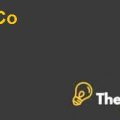
Introduction
The paper attempts to look at the Argentinian Crisis in detail focusing on the reason for the crisis and the effect of the crisis on the citizens and the Banco Hipotecario S.A, located in Argentina. It also provides a solution to Clarisa Estol, the chairwomen of Banco Hipotecario, regarding the challenge that she is facing. The creditors of the company require the company to be liquidated but the chairwomen is inclined to go for a restructure and has to prove that in case of a restructuring the creditors would receive more than what they receive as a result of the liquidation. There are currently two options available to Estol, and she has to focus on the one that suits her company the best.
Banco Hipotecario S.A
Banco Hipotecario is a financial intermediary was established in1886 by the government to aid the middle- income people to finance the purchase of their houses. The bank later was privatized, and the shares of the company were floated in the Argentinian stock exchange. The borrowers in the country preferred dollar dominated loans as it was a bit cheaper compared to the local currency. Therefore, the company has given lots of loans dominated in USD.
The company also faced an issue regarding the funding cost, after the privatization the company could only accept deposits of more than $ 1 million. The cost of funds for the company, therefore, where more than 100 % of a retail bank. BH in order to protect its investors had securitized its loans. Most of the investors of BH were international investors.
Default by Argentina
The Government of Argentina had pegged the local currency at an exchange rate of 1-1 in 1991, during 1999 the devaluation of Argentina’s neighboring country Brazil compounded Argentina’s problems. The real GDP and average household income of Argentina started decline after 1998 and the current accounts and budgeted accounts deficit mounted acknowledging the crisis nearby the investor’s started to withdraw money as a result Peronist Adolfo the president appointed on 24th December 2001 declared the Argentina’s sovereign debt was in default.
As a result of the default, the government allowed its central bank to print local currency disregarding the direct ratio of gold and foreign currency. This was done so that the government could pay off the budgeted deficit and provide assistance to the financial institutions facing liquidity problems. After this a rule passed according to which all deposits were converted in the local currency at an exchange rate of $1 = AR$1.4 and debts were converted at an exchange rate of $1=AR$1 as a result of which all the financial institute were affected, and they were given compensatory bonds maturing after 10 years.
Impact on Banco Hipotecario
All financial institutes including BH faced a currency mismatch, according to the conversion rates the depositors would receive more than what the debtor would pay. This would be paid from the pockets of the financial institutes. In order to compensate the companies facing this crisis, the government issued a compensatory bond maturing after ten years.
The financial institutes faced a negative impact of inflation as the loans had been specified, the consumer price index increase of 41 % which further deteriorated the value of the local currency. The interest rates on the specified loans capped at 12.38 %. The financial institutes were not able to foreclose and bankruptcy proceedings for the next one year, in order to protect the debtor from losing their homes.
Liquidation
Banco Hipotecario has the option to liquidate now, in case of a fire sale scenario the company’s assets will liquidate at AR$ 1,779, which is 32.1 % of the current book value of the assets. The payments made would be 100 % for all the liabilities except the creditor who would be paid AR$ 1,172 which is 26 % of the creditor’s amount.
The company could also liquidate using a run-off scenario in which the central bank would sell the liquid assets and transfer the remainder to the portfolio Trust, The Company would receive AR$ 1,832 from liquidating the assets which equal to 33 % of the book value of the assets. All the liabilities would be paid for their complete amounts, and the remainder that would amount to AR$ 1,225 will be paid to the creditors that makeup 27 % of their dues.
The sole reason for the underpayment is the current market position in Argentina, lack of marketability and liquidity currently have caused the conversion value of loans to decline. However in case of liquidation the creditors will only receive 26 – 27% of their wealth and if restructuring proposes a worsened outcome liquidating the company would be more feasible.......................
This is just a sample partial case solution. Please place the order on the website to order your own originally done case solution.
In 2003, the chairman and majority owner of the leading residential mortgage lender Argentina is considered as the restructuring of the bank to bring to a successful conclusion, as the economy continues to suffer from the effects of the 2001-2002 crisis and the default currency. As competitors banks, many of which were also creditors, begin to close ranks, management and shareholders of Banco Hipotecario need to come up with a plan that will satisfy the creditors and keep the business model of the bank intact.
This case is only available in paper format (HBP do not have the rights to distribute digital content). As a result, a digital copy of an educator if not available through this Web site. "Hide
by Arthur I Segel, Alexander De Royère, Daniel B. Bergstresser Source: Harvard Business School 28 pages. Publication Date: March 27, 2006. Prod. #: 206102-PDF-ENG













